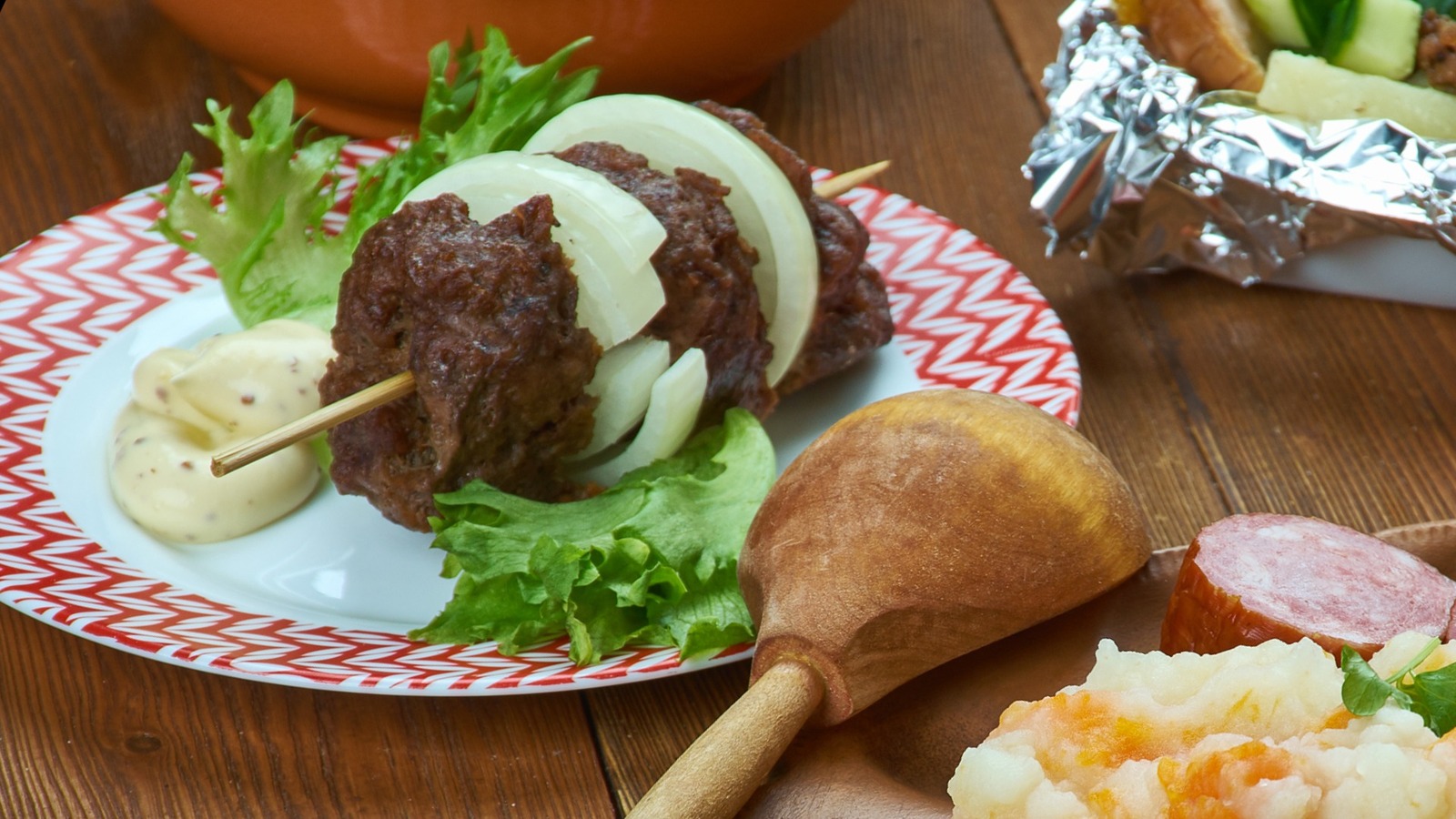
The Dutch Street Food Meatballs You Must Try At Home – The Daily Meal
It goes by many names throughout the Netherlands –- berenklauw, berenhap, spoetnik, gehaktbal speciaal. But if you love meatballs and haven’t had a chance to try them, then you’re missing out by not trying this beloved street food. In fact, there’s no reason you can’t also try making them at home.
Here are the basics of berenklauw. It’s a fried meatball that is sliced into pieces, then served — along with several slices of fried onion — on a wooden skewer. Though there are variations, these are the most essential parts of the dish, which we would certainly put on our list of street foods every traveler must try.
Berenklauw is, of course, just one of many street foods you’ll find in Holland. Food stands are a regular feature on the streets of most towns and cities, including large street markets and eclectic food courts. In the Amsterdam area alone, you’ll find hubs like the Foodhallen Amsterdam, the Albert Cuyp Market, World of Food, and Market 33. At these markets, you’ll find a great many dishes that bear the influence of regions around the globe, including berenklauw.
Fry up some meatballs and onions
 Toine's Kitchen/YouTube
Toine's Kitchen/YouTube
Though many of us are probably more used to seeing meatballs made in the oven, pan-fried meatballs are plenty common too. However, when making berenklauw, a deep-fryer is preferred.
Normally, the meatballs –- made of either beef or a mixture of pork and beef –- are cooked whole in a pan, before they are sliced up and put on a skewer with some onion, then deep-fried. Skewering makes the meatballs a bit easier to work with before frying them. It also creates a nice and crispy texture on the outside, while still retaining the moisture and unctuous texture on the inside. As for the onions, they end up as a finished product that’s somewhat akin to an onion ring — without the batter coating.
Though it’s common to see this street food served as an on-the-go snack, a few skewers served together are hearty enough to be a whole meal. The mixture of textures and flavors will certainly be familiar to many diners: savory and sweet, crispy and juicy — and that’s before we’ve even talked about the sauces.
Don’t forget to add the sauce
 Toine's Kitchen/YouTube
Toine's Kitchen/YouTube
Some of you may have picked up on a similarity between the berenklauw and the various kinds of skewered meat found in the Middle Eastern, South Asian, or Balkan regions. Given the central role the Netherlands played in world trade and colonization, this isn’t too surprising. But other elements of the berenklauw -– particularly its sauce -– reflect even more of an international influence.
A skewer of berenklauw is frequently served with a spicy peanut sauce that may be familiar to those who have had Indonesian food, particularly Indonesian-style satay. Indonesia was a colony of the Dutch state from the early 1800s right up until World War II. To this day, there are about two million people in the Netherlands -– out of a total of 17 million –- with Indonesian ancestry. Among the many foods that found their way into Dutch cuisine is this savory-spicy sauce. It’s also popular today as a way to bring new life to boring old fries, along with many other uses.
Berenklauw can also be served with a spicy tomato sauce flavored with paprika, garlic, and some form of sweeteners like brown sugar or honey. It bears mentioning here that the Dutch word for this sauce –- zigeunersaus -– has been the subject of controversy because “zigeuner” is now recognized as derogatory toward Europe’s Roma and Sinti populations.































![iFi's GO Bar Kensei Dongle DAC Supports K2HD Technology With Some Samurai Swagger [Updated] iFi's GO Bar Kensei Dongle DAC Supports K2HD Technology With Some Samurai Swagger [Updated]](https://i0.wp.com/cdn.ecoustics.com/db0/wblob/17BA35E873D594/33FF/45A11/QTXOLJR4xDKSNMMk2WlTgjaIlvSgcYpeU1xJzUwIoYs/ifi-go-bar-kensei.jpg?w=768&ssl=1)

























